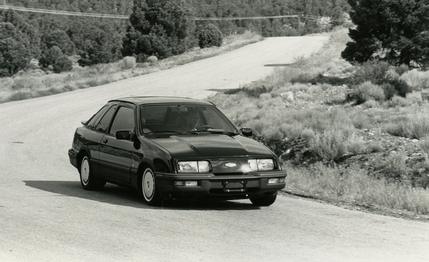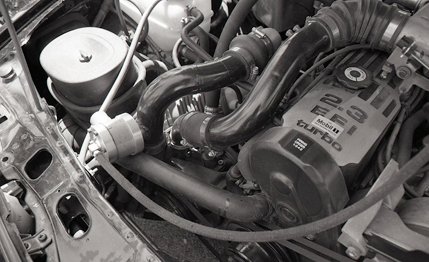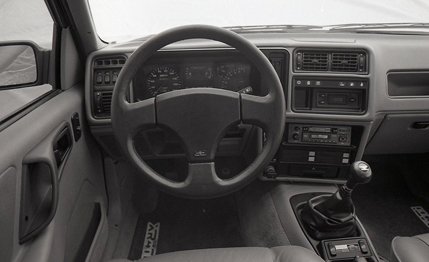 Archived Specialty File
Archived Specialty File
Some of us have a taste for fine imports. Wines, cheeses, leather wear, movies, shotguns, lovers—there's sometimes a certain saveur built into such things overseas that simply is not obtainable domestically. But bringing them into the U.S. can be tricky. The import taste can be Americanized away.
The German-made Ford Sierra has the basic ingredients to qualify as a flavorful European sports sedan—the Europeans themselves love it—but on this side of the Atlantic, some of the life seems to have been cooked out. It was rebranded "Merkur" here (following the pattern set by FoMoCo's earlier fling with a "sexy European," the original Capri line), its suspension was made wimpier than one expects of a Eurocharger, and its well-liked normally aspirated V-6 was replaced by a turbocharged four in a rather lumpy state of tune. True, it's smoother than the same basic engine in the home-grown SVO Mustang, but the SVO's intercooler delivers far more top-end excitement.
The Merkur XR4Ti is still a fairly appealing moderate-duty sporting car. When we compared it with several other sports coupes, we ranked it ahead of the SVO, third behind the Audi Coupe GT and the Toyota Supra. We liked the Merkur's shape, ergonomics, ride, and highway performance. We criticized its handling and engine characteristics. Also, we noticed that steering feel was in very short supply.

If the Merkur XR4Ti appeals to you but you find it lacks a certain piquancy you expected, Russ Harness has opened a spice shop for you.
Harness has been recooking cars for years. A former co-owner of the Quickor aftermarket suspension firm, he's now in partnership with Dick Landfield, who, among other things, owns a network of Southern California Ford dealerships.
Their Merkur operation is called the Rapido Group and can be reached at 1350 Yorba Linda Boulevard, Placentia, California 92670; 714-524-1200.
The most important Rapido addition is an air-to-air intercooler, which drops the temperature of the pressurized intake charge from about 270 to 135 degrees Fahrenheit, according to Harness, and this raises its density. On the SVO, the cooler sits atop the engine and is fed by an asymmetric hood scoop. Rather than duplicate this arrangement, Harness has chosen to mount his cooler low in the nose, below bumper level, a solution that adds about six feet to the length of the intake passages.

A disadvantage of adding an intercooler to any car is that its internal passages can cause a flow restriction, sacrificing some boost pressure. However, Harness says he has managed to "trick" the engine's sensors to get the boost back to its normal 15 psi. He has also added a pressure-relief bypass that dumps intake-manifold air back into the intake side of the turbo whenever the throttle is closed, thus keeping the turbine spinning more freely and reducing lag when the throttle is reopened. (Similar devices were used by Porsche on the 924 Turbo and by BMW on its 745i.)
On the prototype we tested, the inter-cooler was located on the starboard side and fed by an ugly handmade scoop. Rapido Merkur number two has the cooler in the center, behind an existing intake slot and ahead of the bottom of the radiator. Hot-weather climbing on a desert mountain road showed no adverse effect on engine temperature, says Harness. He is giving some thought to adopting the SVO layout, though.